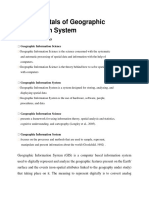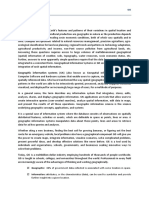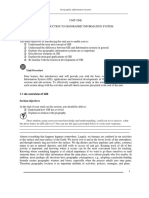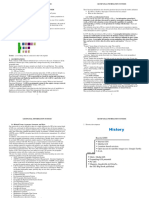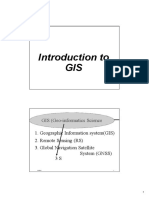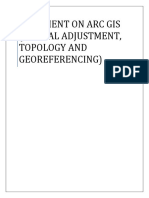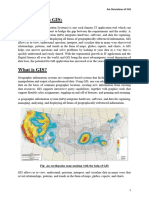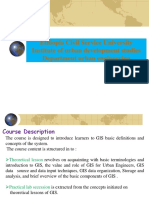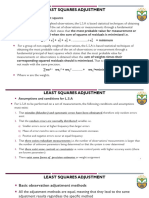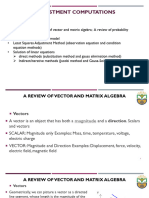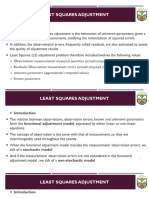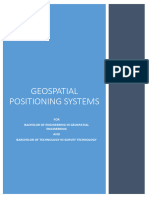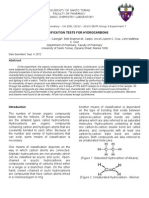0% found this document useful (0 votes)
77 views32 pagesGIS A - Introduction - Lecture 1 - Edited14092023
This document provides an introduction to Geographic Information Systems (GIS). It defines GIS as both a science and a system that involves collecting, storing, analyzing and displaying spatial data. The document outlines the history and development of GIS, from early examples in the 1850s to the growth of digital GIS technology starting in the 1960s and 1970s. It also defines key GIS concepts and terminologies such as geographic data, spatial data, geospatial data and geographic information.
Uploaded by
Jecinta wCopyright
© © All Rights Reserved
We take content rights seriously. If you suspect this is your content, claim it here.
Available Formats
Download as PDF, TXT or read online on Scribd
0% found this document useful (0 votes)
77 views32 pagesGIS A - Introduction - Lecture 1 - Edited14092023
This document provides an introduction to Geographic Information Systems (GIS). It defines GIS as both a science and a system that involves collecting, storing, analyzing and displaying spatial data. The document outlines the history and development of GIS, from early examples in the 1850s to the growth of digital GIS technology starting in the 1960s and 1970s. It also defines key GIS concepts and terminologies such as geographic data, spatial data, geospatial data and geographic information.
Uploaded by
Jecinta wCopyright
© © All Rights Reserved
We take content rights seriously. If you suspect this is your content, claim it here.
Available Formats
Download as PDF, TXT or read online on Scribd
/ 32



